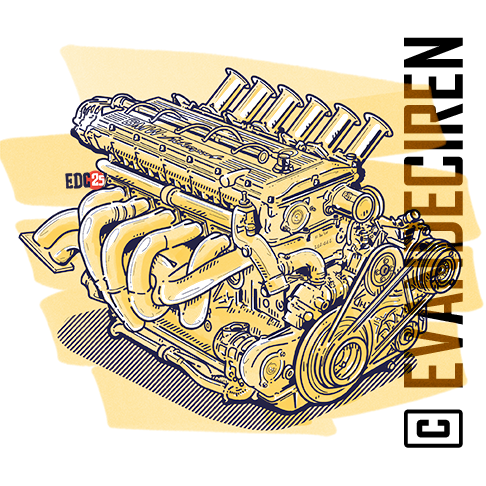Tech Analysis: BMW M1 Procar
Where German ingenuity turned failure into a motorsport legend.
Born to dominate Group 5 and ultimately responsible for creating the most spectacular one-make championship in history, the BMW M1 Procar stands as the perfect symbol of how engineering can reinvent itself. Power, elegance, and brutality united in one body, the ultimate expression of Bavarian mechanical roar.


The Birth of an Unintended Revolution
The M1 project was born to compete against the Porsche 935, but production delays and the break with Lamborghini forced BMW to rethink its strategy. The Group 4 homologation was postponed, and Jochen Neerpasch came up with a brilliant escape plan: the Procar Championship, where the best Formula 1 drivers would race in identical M1s.

Where Champions Battled as Equals
The 1979 Procar Championship brought 20 identical 470-hp M1s to the track. The top five Formula 1 drivers always started at the front, ensuring epic duels between professionals and privateers. Niki Lauda won the inaugural season, followed by Nelson Piquet. The M1s roared like mechanical symphonies through the walls of Monaco and the sweeping curves of Hockenheim.

The Bavarian Heart – The M88/1 Engine
Beneath the hood lay a technical masterpiece: the 3.5-liter aluminum inline-six M88/1, featuring slide throttle valves and dry-sump lubrication. It delivered 470 hp at 9,000 rpm a timeless metallic scream. The throttle response was instant and brutal, a pure mechanical weapon free from any electronic compromise.

Chassis, Weight, and Bilstein Mastery
The steel tubular frame and fiberglass panels kept the weight down to just 1,020 kg. With adjustable Bilstein suspension and ventilated ATE brakes, the M1 became a true track blade. Every corner was a test of balance, with no power steering only the driver’s skill and the voice of the asphalt.

rutal Design, Pure Beauty, and Racing Functionality
With wide wheel arches, a deep front spoiler, and an adjustable rear wing, the BMW M1 Procar embodied the pure essence of functional design. Every air intake served a purpose. The cockpit, bare and uncompromising, was a temple of roaring vibrations and the scent of fuel form follows function, and here, function means speed.

Conclusion: BMW M1 Procar: The Forgotten Legend
The BMW M1 Procar is the perfect example of how failure can turn into legend. Where BMW Motorsport set out to build a Group 5 racing car, it instead gave birth to an icon that united Formula 1 drivers and touring car specialists in a showdown never seen before or since. Jochen Neerpasch didn’t just create a championship; he created a myth. Putting the kings of Grand Prix racing against GT experts was a stroke of genius, a move more worthy of a racing novel than an engineering manual.
Paul Rosche’s M88/1 engine, a naturally aspirated six-cylinder delivering 470 horsepower, screamed to 9,000 rpm as if it wanted to redeem every delay and every failed contract. And it did. With 280 kilograms shaved off and Bilstein suspension paired with wide BBS wheels, the BMW M1 was pure, honest, and brutally alive. A car to be tamed, not merely driven.
Only 54 units were ever built, yet its echo never faded. The M1 Procar wasn’t just a footnote, it was a statement: the final anthem of an era when courage mattered more than regulations. A symphony of steel and fuel that taught BMW how to build a legend, not through numbers, but through emotion.